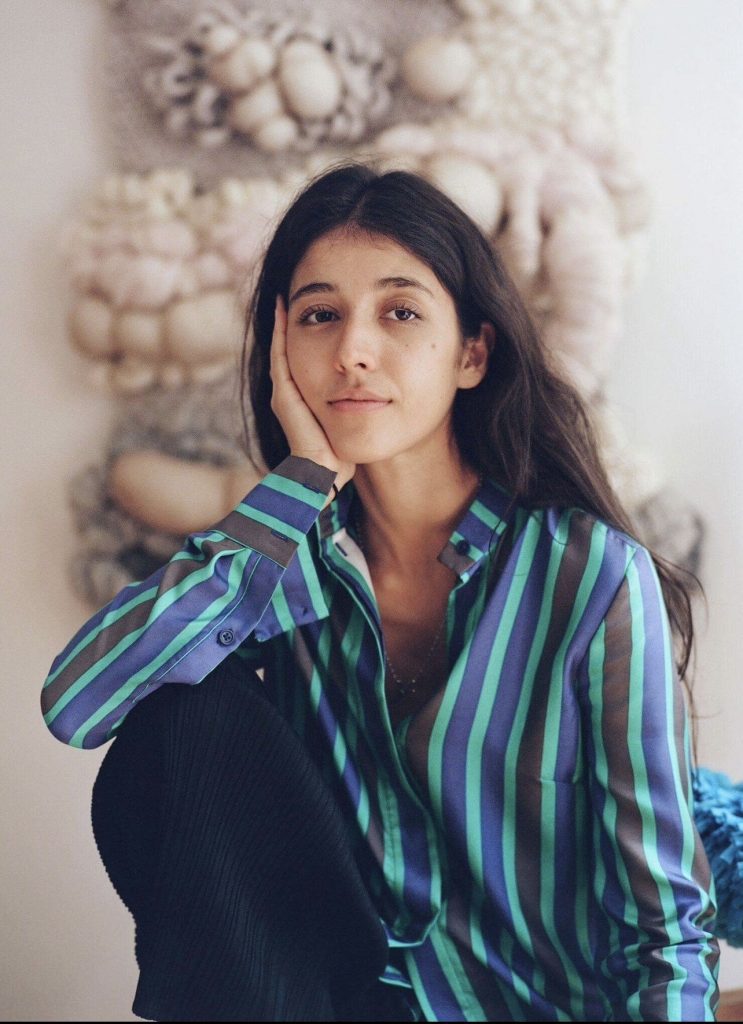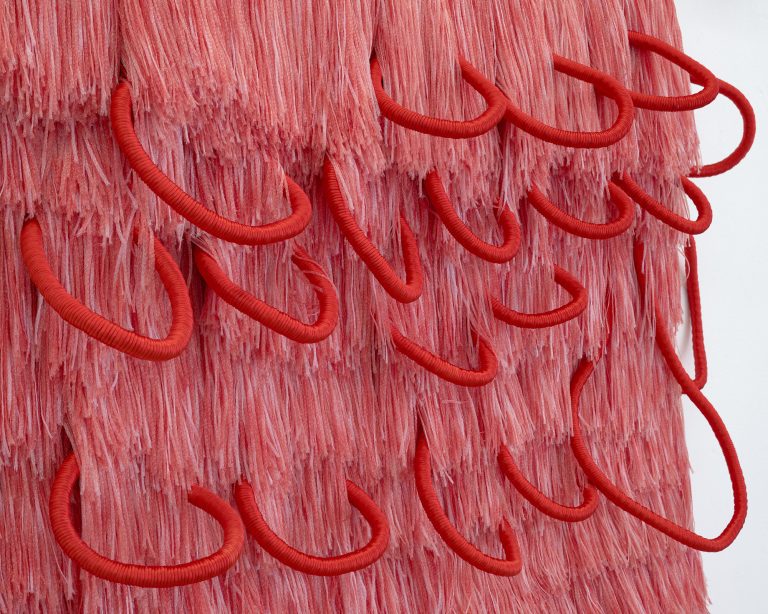

When Desire Moheb-Zandi‘s pieces take centre stage, you’re not just looking at art – you’re feeling it. Desire invites you into a world where traditional weaving techniques are paired with a fearless exploration of unexpected materials. As she prepares for Art Miami Basel, Desire reflects on the raw power of touch, memory, and identity in her art. Through monumental tapestries and soft sculptures, she weaves narratives that aren’t just seen but also felt deeply. Her works are stories in thread, deeply personal yet universally relatable, and they’ll leave you questioning how we define culture, history, and the spaces we inhabit.
hube: Your notable commissions for commercial spaces like the Etam Haussmann flagship store and Chanel’s Métiers d’Art headquarters showcase your impact in both the commercial and artistic realms. How do you approach commissions differently from personal projects, and what do you enjoy most about creating pieces for public spaces?
Desire Moheb-Zandi: It varies. I love creating pieces for public spaces and engaging in a dialogue with the public.
In the Etam Haussmann flagship store, I was commissioned to create a monumental tapestry made out of second-hand bras. I cut, assembled, and superimposed the different elements of the bras and wove them to make a multi-panel large work. I love giving new life and meaning to upcycled materials. Recycling used bras to create a monumental tapestry, for me, symbolised the link woven between all the women, near and far, involved in this project. The title of the work is Let me be me (2022).
For Chanel Métiers d’Art, we created a monumental tapestry. I was invited by the artistic director of my studio, Poush, and Chanel’s new Métiers d’Art headquarters, Le19M, to produce a large-scale work. The embroidered panels on the tapestry are in collaboration with Maison Lesage. It took five months to embroider the panels through workshops with the participation of the general public. A Fantasy Adventure (2023) plays around with the idea of an imaginary vertical game platform world in which all things and beings would be entangled together, constituting the millions of threads of a woven reality. The pixelation in platform games shares a similarity to Anatolian traditional kilim patterns.
h: Your recent exhibition, New Traditions, was your first solo show during Berlin Art Week. How does this context influence the way you approached the creation of the works, and what do you hope to achieve with this particular presentation?
DMZ: Having my solo show during Berlin Art Week was wonderful. My opening evening was especially meaningful as the gallery celebrated its 20th anniversary and marked my debut solo show in Berlin, where I was born. I don’t know how to exactly answer your question, but I am very happy to be represented by Wentrup and am looking forward to having many more dialogues together and continuing to grow in the years ahead.

